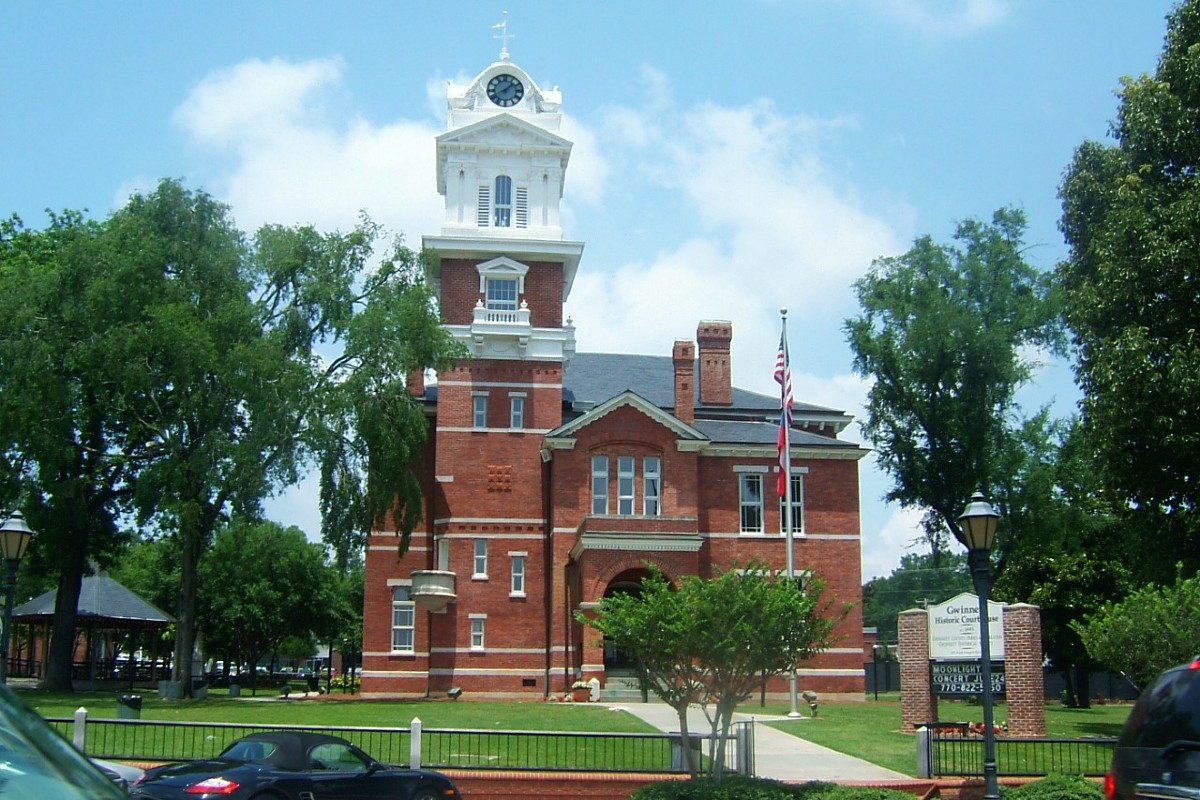By Elliott Brack
Editor and Publisher, GwinnettForum
FEB. 24, 2023 | This week a group was being led on a tour of the new Lawrenceville Performing Arts Center, which is run by the Aurora Theatre. As the group stopped at one exhibit, something was said that the Trail of Tears, which removed Cherokee Indians westward, started at the Gwinnett Courthouse.
![]() One person who did not hear this entirely, exclaimed: “You mean that they gathered all the Indians here to start the Trail of Tears?”
One person who did not hear this entirely, exclaimed: “You mean that they gathered all the Indians here to start the Trail of Tears?”
Well, no, that was not what was said. Today in Georgia History reported that on Sept. 15, 1831, the beginning of the infamous Trail of Tears could well be traced to a Gwinnett County courtroom. It all occurred in a case of Worcester v. Georgia.
Here’s some background: During the 1820s, Governor George Gilmer made Cherokee removal a top priority. But in 1827, the Cherokee Nation established a government and declared themselves sovereign.
In response, furious Georgia leaders abolished the Cherokee government, and annexed Cherokee land. Meanwhile, two missionaries working with the Cherokees were providing legal and political advice to the tribe. The missionaries to the Cherokees, Samuel Worcester and Elizur Butler, were accused of violating a newly passed Georgia law that prohibited whites from living within the Cherokee nation.
On October 15, 1831 in a Lawrenceville courtroom, they were tried, convicted and sentenced to hard labor. On appeal to the Supreme Court, Chief Justice John Marshall struck down Georgia’s laws and ruled the Cherokees a separate, sovereign nation.
The decision outraged President Andrew Jackson and only strengthened Georgia’s resolve to seize Cherokee land and led directly to forced removal in 1838. The dark path to the Trail of Tears began on September 15, 1831.
Here are some additional facts in the case:
Worcester and Butler, who were non-Native Americans, were indicted in the Superior Court of Gwinnett for “residing within the limits of the Cherokee nation without a license,” and without “having taken an oath to support and defend the constitution and laws of the state of Georgia.”
This indictment came in 1830.
Among the arguments made in Worchester was that the state of Georgia could not maintain the prosecution because the statute violated the Constitution, treaties between the United States and the Cherokee nation, and even violated an act of Congress entitled “An act to regulate trade and intercourse with the Indian tribes.”
The Gwinnett court did not listen to Worcester, et als’ arguments. The two were convicted to “Hard labour in the penitentiary for four years.”
On appeal, the main question before the United States Supreme Court was: does the state of Georgia have the authority to regulate the intercourse between citizens of its state and members of the Cherokee Nation?
In the opinion written by Chief Justice John Marshall, the answer was a 5-1 decision for Worchester, with the majority opinion reading: “The Constitution acknowledges Indian tribes as separate and political entities rending the Georgia statue void.”
After receiving a pardon from the subsequent governor, Worchester left Georgia on a promise to never return. He moved to Indian Territory in 1836 in the period of Cherokee removal on the Trail of Tears. Worcester resumed his ministry and continued translating the Bible into Cherokee. On April 20, 1859, he died in Park Hill, Indian Territory. In 1963, he was inducted into the Hall of Great Westerners of the National Cowboy and Western Heritage Museum.
Thanks to Daniel Summers Jr. of the Aurora for help in putting this puzzle together. That’s the end of a history lesson for Gwinnettians today.
- Have a comment? Send to: elliott@brack.net










Follow Us